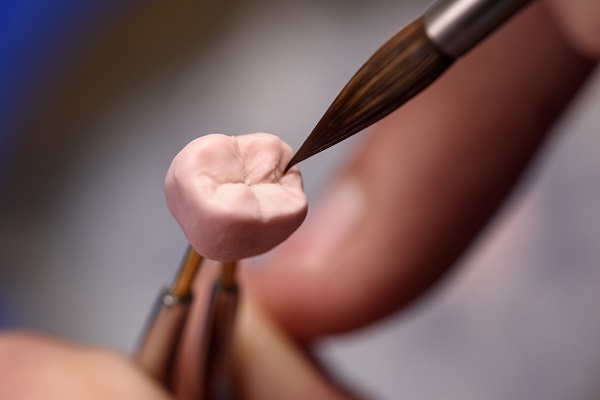How a Dental Crown Is Used for a Damaged Tooth

A dental crowns is a device used to restore the functions and look of a tooth that has been damaged. If you need a root canal, a fractured tooth, or a big filling, your dentist may also decide to place a dental crown. The new crown covers the part of the tooth visible above the gums.
How is a dental crown used to restore a damaged tooth?
Dental crowns are permanently bonded to teeth that are severely decayed, fractured, or damaged. They cover the whole region of the natural tooth's crown that is above the gum line. Dental crowns are created to fit the patient's tooth and can be composed of various materials, including porcelain, composite resin, and gold.
Dentists use crowns for various purposes. They can prevent a cracked tooth from additional deterioration, strengthen a weak tooth, support a tooth with big fillings, and restore the form of a damaged tooth. The crown is a restoration that supports and replaces the tooth structure that has been damaged. When a crown is bonded to a broken tooth, it effectively becomes a part of the tooth and helps to keep it together.
A dentist usually recommends crowns to restore the function, form, look, and alignment of a damaged tooth. It is the only visible part of the tooth once it is in position. They are designed to blend in with the rest of the teeth and are usually undetectable. Crowns are made of strong and long-lasting materials so they can withstand the pressure of chewing and biting.
The dental crown placement
The soft tissues around the tooth that will receive the dental crown will be numbed with a local anesthetic by the dentist. They will remove a portion of the tooth enamel on both sides with a dental drill to make room for the new crown. If a portion of the present tooth's structure is missing, the dentist may fill up the gaps to provide a solid foundation for the dental crown. Following that, the dentist will take imprints of the teeth and send them to a dental lab, which will manufacture the crown.
After receiving the patient's tooth impressions, the dental lab will construct the crown in around two weeks. The dentist will offer a temporary crown to safeguard the tooth while it is being made. When the permanent crown is ready, a second appointment will be required. Next, the dentist will remove the temporary crown and fit the new one properly to the tooth and bite.
When the dentist is happy with the tooth's alignment, dental cement will firmly attach the crown to the tooth. The cement drying process ensures that the crown is securely attached.
The bottom line
If you currently have a tooth that is damaged, cracked, or decayed, it is a good idea to schedule a consultation appointment with a dentist as soon as possible. They will assess your situation and recommend the appropriate treatment.
Request an appointment here: https://brightsmilesdental.com or call Mariana Blagoev DDS at (732) 721-3512 for an appointment in our Parlin office
Check out what others are saying about our dental services on Yelp: Dental Crowns in Parlin, NJ.
Related Posts
Have you recently chipped a tooth? Read on to learn what to do after chipping a tooth. Several factors may lead to a chipped tooth, including decay and, more often, impact. This may be caused by physical activity, auto accidents, or even consuming hard foods. Even with healthy teeth, chips are occasionally inevitable. If you…
When it comes to replacing missing teeth, you can choose between options like dentures, a dental bridge, and dental implants. The last thing you want to do is leave the missing teeth unreplaced as it can have undesirable consequences on oral health. This article explains what a dental bridge is, how it works, and how…
Gum disease is a common dental problem. Poor oral care, lifestyle, and diet contribute to the onset and worsening of this condition. Preventing periodontal disease is better than going through the treatments. If you want to know why preventing gum disease is important, here are the details.Preventing gum disease can keep teeth looking good and…
Almost everyone experiences a stained tooth throughout their lives, which is where cosmetic dentistry can be helpful. There are many different treatment options that fall under the cosmetic dentistry category, all of which can be used to transform, restore or renew teeth that are not in optimal condition. Stains often result in embarrassment or shame;…
